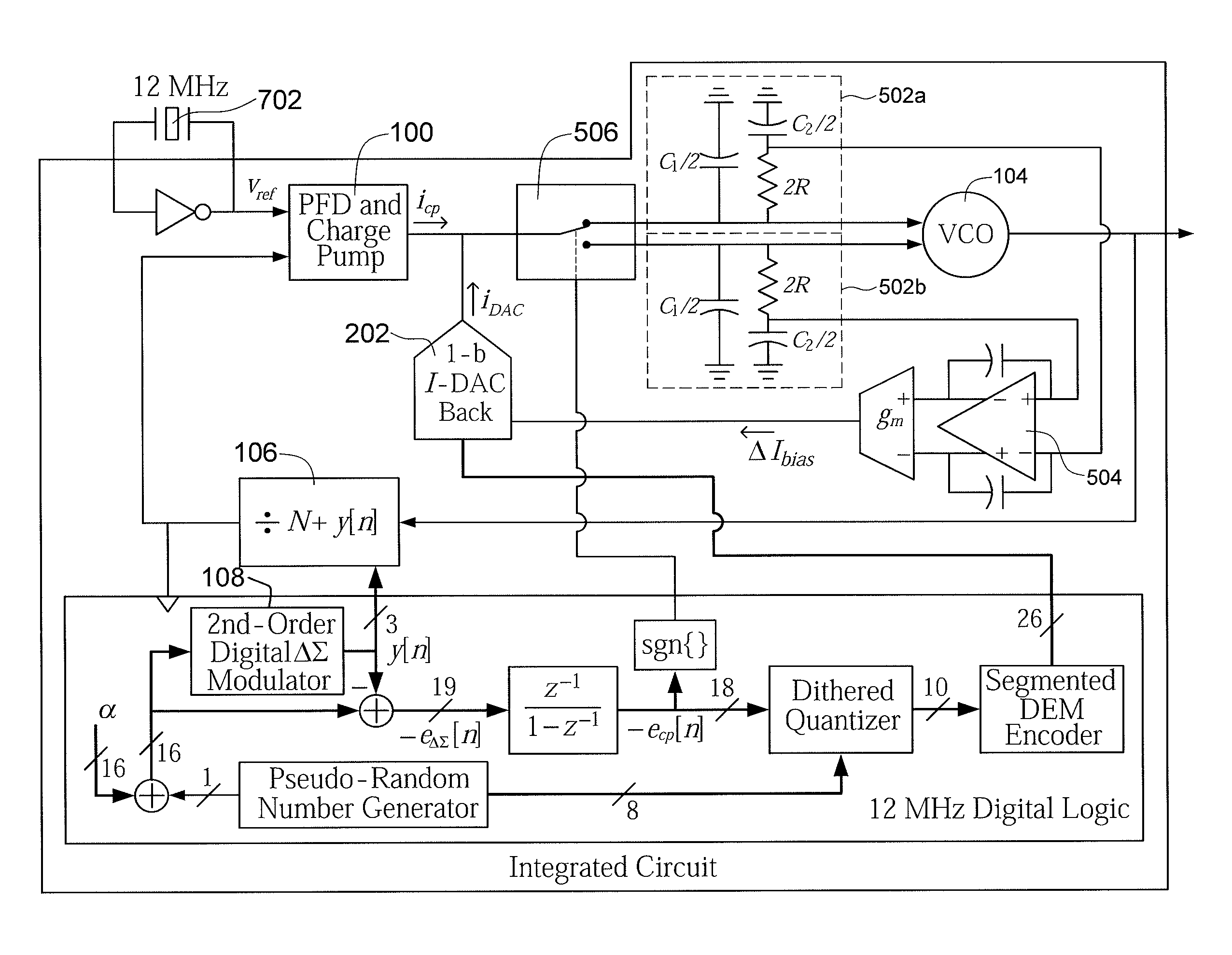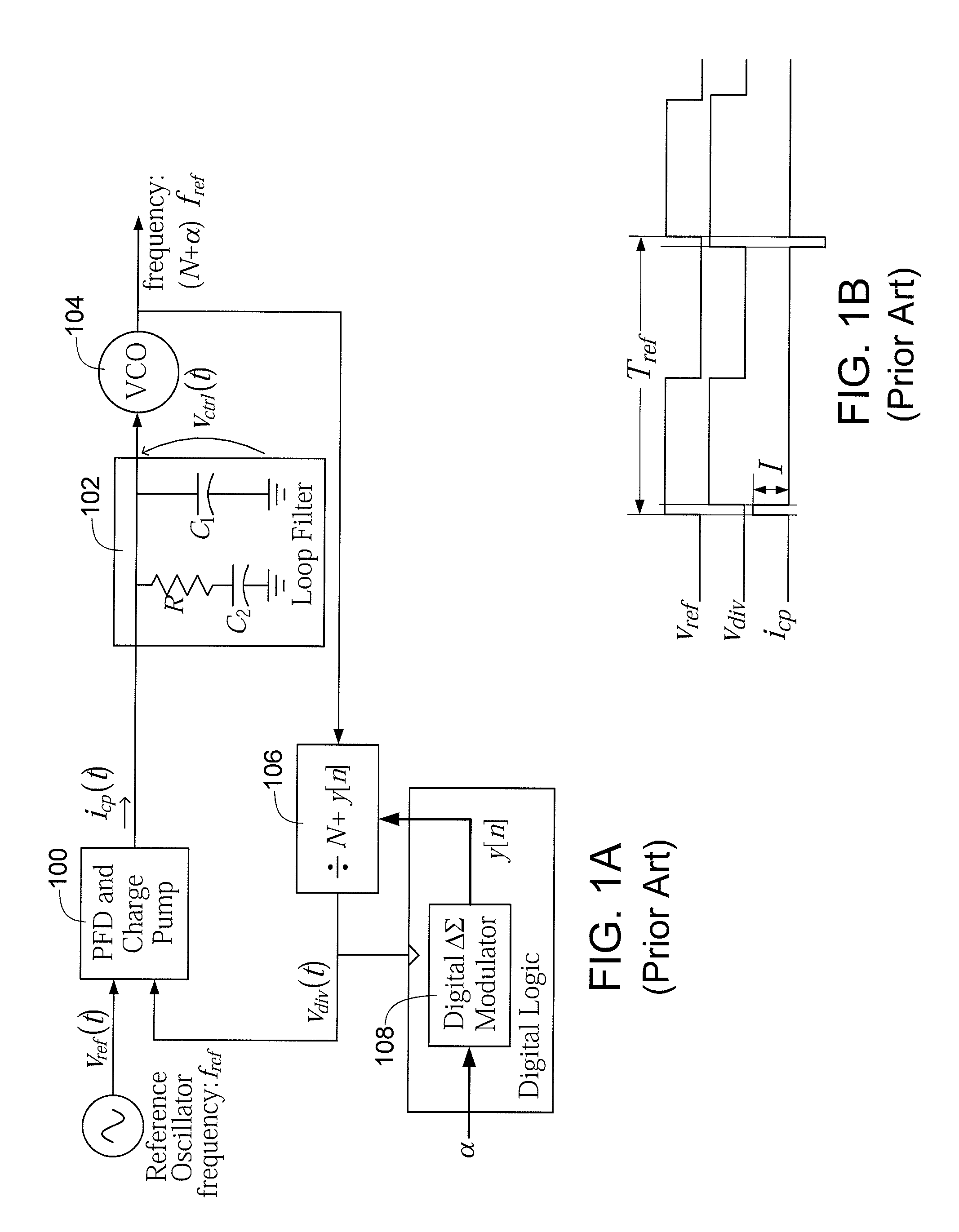Adaptive phase noise cancellation for fractional-N phase locked loop
a phase lock loop and phase noise cancellation technology, applied in the direction of electrial characteristics varying frequency control, pulse technique, count chain synchronous pulse counter, etc., can solve the problem of y[n] being restricted to integer values, phase noise cancellation becomes increasingly difficult, and another type of mismatch between charge pump and dac occurs in practi
- Summary
- Abstract
- Description
- Claims
- Application Information
AI Technical Summary
Benefits of technology
Problems solved by technology
Method used
Image
Examples
Embodiment Construction
[0039]The invention provides a circuit and method for adaptive phase noise cancellation for a fractional-N PLL. It makes it possible to achieve accurate phase noise cancellation even with low reference frequencies.
[0040]An embodiment of the invention is a circuit for adaptive phase noise cancellation for a fractional-N PLL. A preferred embodiment employs a split loop filter architecture. Two loop filter halves separately drive half-sized parallel varactors in a VCO and also drive a differential-input lowpass frequency selective circuit. e.g., a differential-input integrator, in a least mean squared (LMS) feedback loop. The output of the differential-input lowpass frequency selective circuit adjusts the gain of the DAC in the phase noise cancellation path to minimize β.
[0041]The two varactor capacitances add together in the VCO tank, so the VCO frequency depends on the common-mode loop filter voltage and is relatively insensitive to differential-mode voltage. In contrast, the differe...
PUM
 Login to View More
Login to View More Abstract
Description
Claims
Application Information
 Login to View More
Login to View More - R&D
- Intellectual Property
- Life Sciences
- Materials
- Tech Scout
- Unparalleled Data Quality
- Higher Quality Content
- 60% Fewer Hallucinations
Browse by: Latest US Patents, China's latest patents, Technical Efficacy Thesaurus, Application Domain, Technology Topic, Popular Technical Reports.
© 2025 PatSnap. All rights reserved.Legal|Privacy policy|Modern Slavery Act Transparency Statement|Sitemap|About US| Contact US: help@patsnap.com



